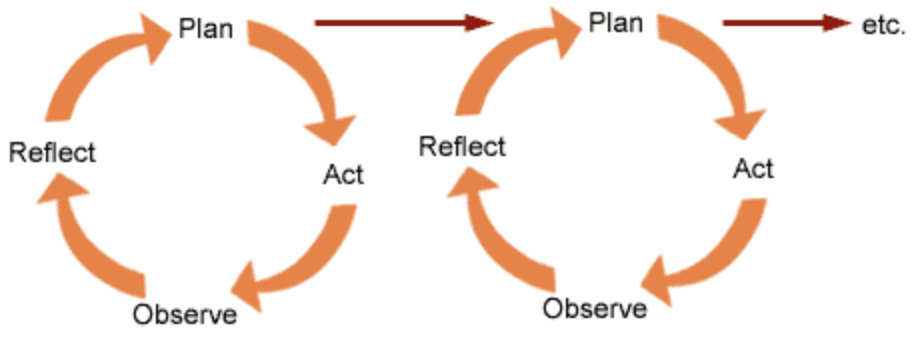Published – 15 May 2018 By Gavin Beever
Image source: Valencia College
Action Research is an approach that brings together researchers and end users (theory and practice) to deliver practical outcomes through a process of shared knowledge creation that empowers the end users to undertake practice change.
“Practice change relates to how farmers alter their current practices to improve their economic, environmental and social sustainability within their industry” Ryan et al (2004)
It is a group based, collaborative approach between researchers, who have expertise in the discipline and end users, who need the knowledge to help make more informed decisions and take action. Action Research can involve any stakeholder who is impacted by the problem or has an interest or stake in it.
Researchers can see their theories applied in natural settings. Farmers and other end users of research, can implement the research outcomes with the support of the research experts. With this approach, innovation can occur that is tailored to meet local needs.
Steps to Conducting Action Research
- Reflect
- Describe the problem or opportunity
- Give the background to the problem or opportunity to the industry and identify the stakeholders to be involved
- Define the objectives for the Action Research, ensure they are S.M.A.R.T. (Specific, Measurable, Attainable, Relevant and Timely)
- Review the current situation, the knowledge around the problem or opportunity, the needs of the different stakeholders and as a group identify recommended actions
- Plan
- Develop an action plan for the actions: What is going to be done by whom and when
- Develop a monitoring and evaluation plan; how are the actions and outcomes achieved (against the objectives) are going to be monitored and evaluated
- Act
- Undertake the identified actions
- Observe
- Monitor and evaluate, make sense of the outcomes
- Reflect
- Undertake critical review of the outcomes and use this to inform future plans and associated actions against the objectives

Fig 1. The steps follow Kolb learning cycles, undertaking action research through repeated cycles leads to continuous improvement
Tools and processes that can be used to assist in implementing the steps
- The Group facilitation/empowerment model, an extension practitioner can use the model to facilitate group engagement. For more information click here
- The Program logic model, this model can be used in planning the program and can provide the basis for setting up evaluation. For more information click here
- Design thinking, this process can be used to understand the needs of users and develop insights to meet those needs. For more information click here
- Needs analysis, this process can be used to identify stakeholders and their needs. For more information click here
- Bennett’s Hierarchy, this model can be used to help plan and evaluate. For more information click here
- Mind mapping, this approach can be used for brainstorming a concept or issue, either as an individual or with a group. For more information click here
- Nominal group technique. This group extension process can be used to generate outcomes and facilitate decision making around ideas, issues or problems, by a group. For more information click here
- The ORID method is a great way to structure discussions, surveys, interviews or presentations. For more information click here
- SWOT analysis can be used to review the current situation in respect to the strengths, weaknesses, opportunities or threats. For more information click here
- Communities of practice and social learning systems. This provides a social learning system that can be used to engage stakeholders and have them collaborate together. For more information click here
- Stakeholder analysis tool. For more information click here
- DISC. This tool can be used to make communication more effective. For more information click here
- Learning styles. Honey and Mumford designed a process for identifying learning styles and how best to cater for different ones. For more information click here
Information sources and further information
Ryan et al (2004) Evaluation and practice change: a private and public sector collaboration . New directions for a diverse planet: Proceedings of the 4th International Crop Science Congress Brisbane, Australia, 26 Sep – 1 Oct 2004
